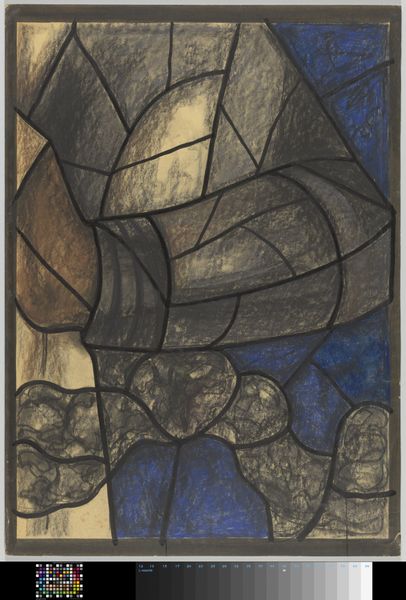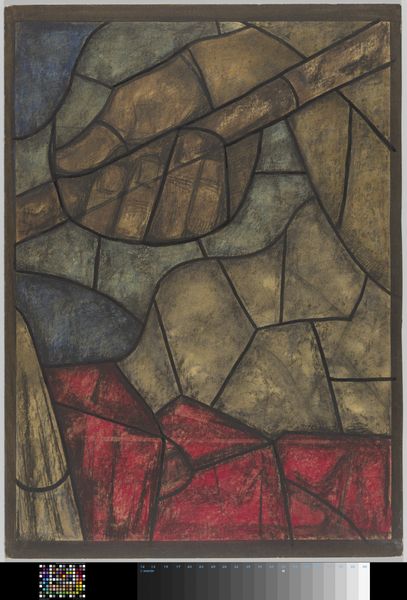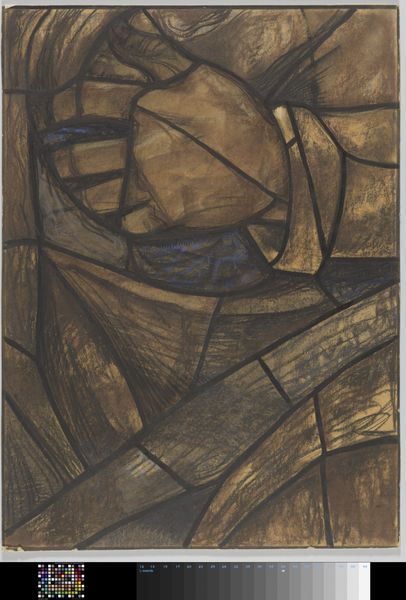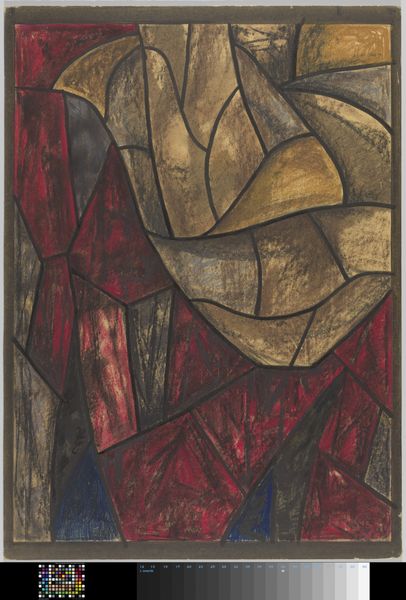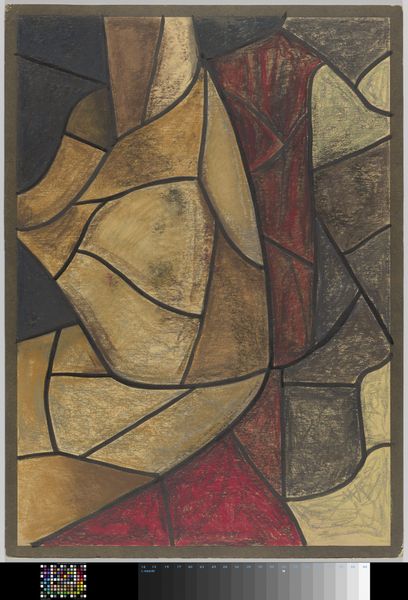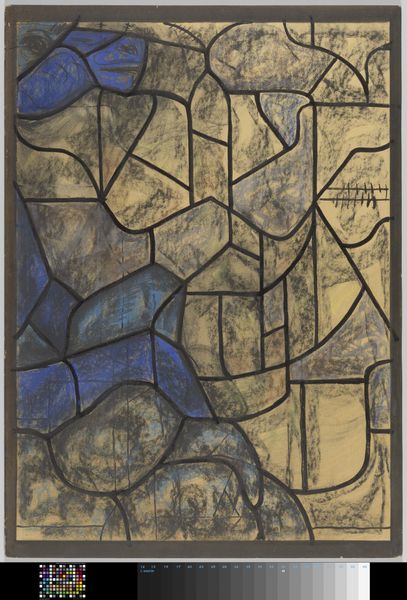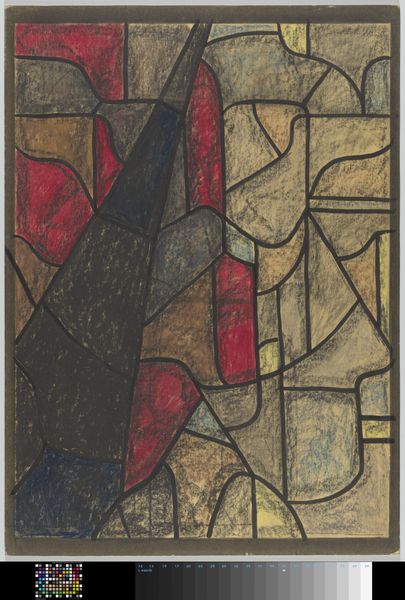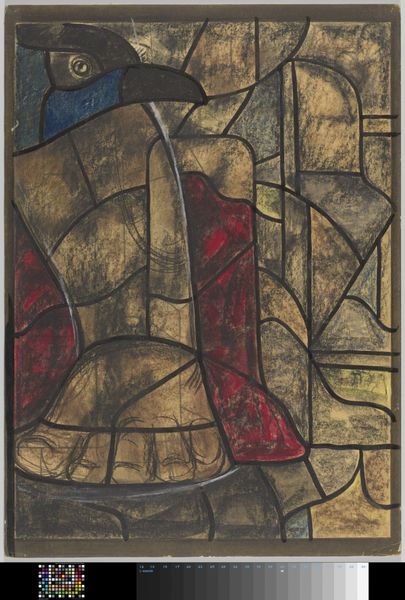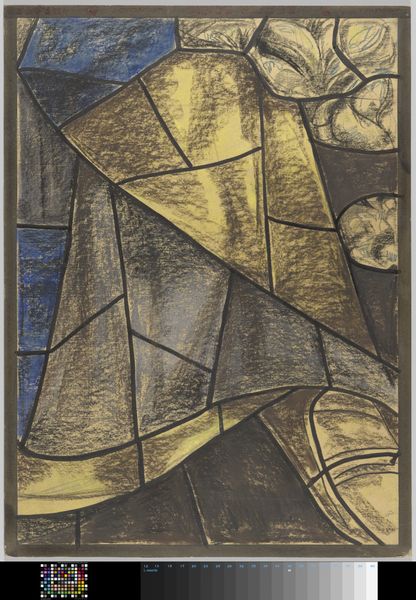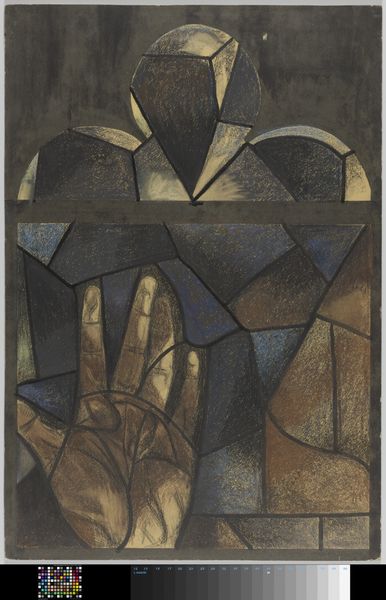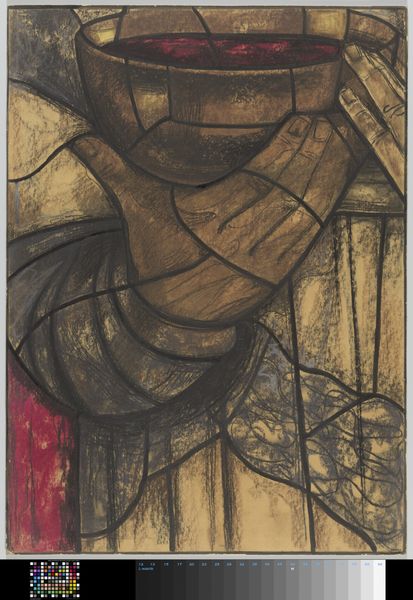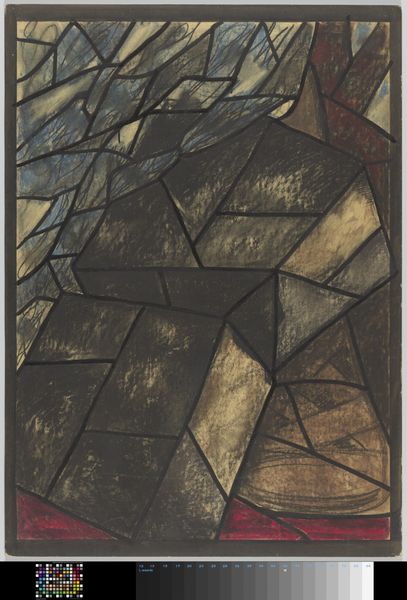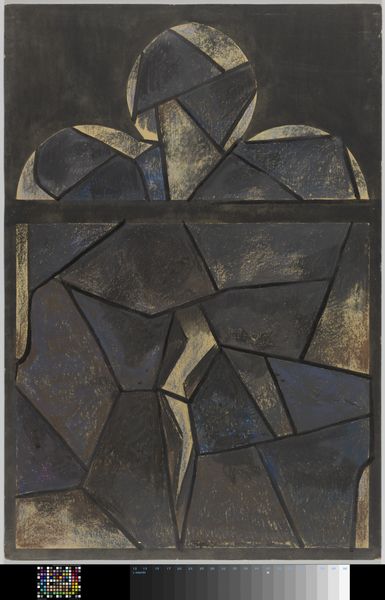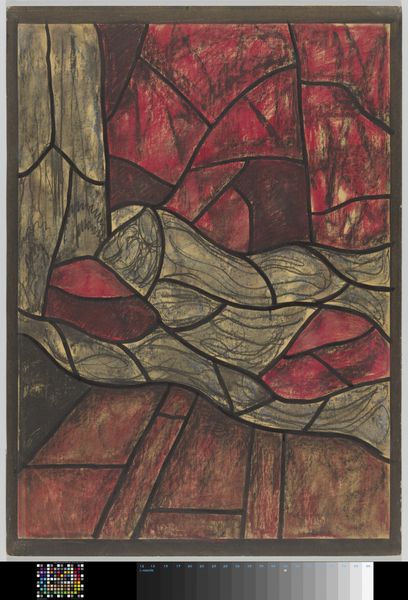
Ontwerp voor raam in het Noordertransept in de Dom te Utrecht c. 1934
0:00
0:00
drawing, mixed-media
#
art-deco
#
drawing
#
mixed-media
#
geometric-abstraction
#
mixed media
#
watercolor
Dimensions: height 1123 mm, width 809 mm
Copyright: Rijks Museum: Open Domain
Editor: Here we have "Ontwerp voor raam in het Noordertransept in de Dom te Utrecht," a design for a window in the Utrecht Cathedral, created around 1934 by Richard Nicolaüs Roland Holst. It's a mixed-media drawing, and what strikes me first is how the composition uses these strong geometric lines to create what looks like an abstract hand. What do you see in this piece? Curator: I'm immediately drawn to the artist's exploration of form and structure. The drawing employs a rigorous geometric vocabulary, effectively fragmenting the hand into a series of distinct planes. Observe how each segment is carefully delineated, creating a mosaic-like effect. Consider how Holst uses this approach to challenge traditional representation. The color palette –earthy browns and beiges– also plays a crucial role. How do these limited hues contribute to the overall composition? Editor: They definitely give it a very grounded, almost somber feeling, but I also feel this creates a clear structure of shadows and shapes across the whole artwork. So, the focus becomes about line and form rather than color, wouldn't you say? Curator: Precisely. The emphasis shifts from chromatic vibrancy to a more analytical investigation of spatial relationships and planar construction. Note how the black outlines reinforce these divisions, creating a strong sense of internal logic within the design. Are you familiar with any contemporary movements that share these concerns? Editor: Art Deco definitely comes to mind with the geometric forms. And I guess thinking about what you said it also reflects that interest in abstraction, not just representing the hand as it is but taking apart the key parts to emphasize something else? Curator: An excellent observation. Holst successfully uses the formal elements—line, shape, and color—to articulate a vision that transcends mere depiction, venturing into the realm of abstraction. Editor: I’ve learned that by carefully studying how an artist uses basic things like lines and shapes we can start understanding their idea more clearly, especially when we look beyond simply what is represented in the artwork.
Comments
No comments
Be the first to comment and join the conversation on the ultimate creative platform.
